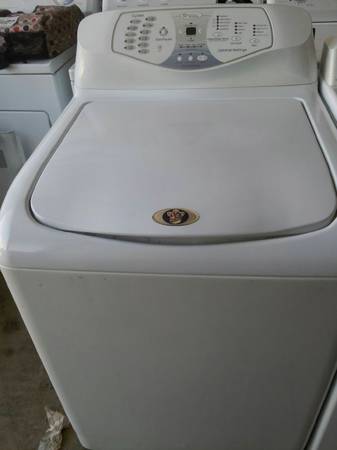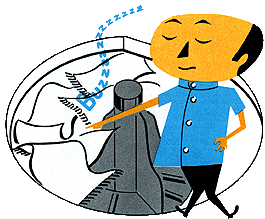|
Thread Number: 49980
Maytag TL HE " the tumble kind" |
[Down to Last] |
| Post# 721729 12/17/2013 at 23:05 (3,873 days old) by alr2903 (TN) | ||
|
T/L He Tag CLICK HERE TO GO TO alr2903's LINK on Memphis Craigslist 
| ||

|
Post# 721963 , Reply# 3 12/19/2013 at 08:16 (3,872 days old) by DADoES  (TX, U.S. of A.) (TX, U.S. of A.) |
||
 The drive mechanism isn't as complex as may be expected. A few details that may be unexpected: 1) Incoming water fill is channeled through the lid via spray jets and capture flumes on the rear edge. The lid cannot be open during fill. Bleach and softener cups are at the front corners of the top deck, part of the fill flow diverts through side channels in the lid at appropriate times (first rinse, final rinse) to flush the cups. The detergent dispenser is a double-cavity gizmo (left side liquid, right side powder) that mounts to the underside of the lid. 2) The tumblers (clothes lifters) rotate in one direction, they do not reverse during washing and rinsing. They do reverse for a partial-turn at the beginning of spin to center the load in the drum from having climbed up the side as happens during tumbling. 3) The lid locks through the entire cycle and tricking it is difficult. There are locking pins on both sides near the front corners. A magnetic sensor is on the left side, a magnet must be placed in the correct position at left side of the top beside the lid bumper. Both locking pins are spring-loaded. The right-side locking pin must be held extended just past the "balance point" of the spring (as if the lid is properly closed) to trick the mechanism ... it won't work if the pin is fully extended. Easiest work-around is remove the top clips so the top can be raised, which also allows the lid to remain closed for filling. 4) There's no brake. The spin drum is heavy with a lot of inertia, takes a long time to coast to a stop. 5) It can sense if the hot/cold supply hoses are connected in reverse, electrically reverses the water valves to compensate. 6) The balance-sensing routine tries several times to distribute the load, then refills/tumbles if necessary. IIRC it does the full routine twice if necessary, which is six or eight spin attempts, then signals an unbalanced load fault and unlocks for attention. A accelerometer (shock detector) on the control board detects if the drum impacts the cabinet during any spin attempt and maximum speed is limited to 500 RPM in that case. 7) There are two fill levels. The lower level is for the wash phase and 1st rinse (also the 2nd rinse if extra rinse [3 rinses] is selected). The higher level is used for the Bulky cycle and the final rinse on all cycles. 8) Distribution spin / balance sensing starts before the water drains. It neutral-drains first to the lower level if the higher level is in play. | ||
| Post# 722125 , Reply# 5 12/20/2013 at 03:04 (3,871 days old) by redcarpetdrew (Fairfield, CA) | ||
If only 'twas that simple...
The lid lock system needs power to lock and unlock. If you have a power outage (or a brain dead motherboard for that matter...) the locks will not cycle. Normally, the motor control reads tach signal and will not send feedback to the main control allowing the lid locks to cycle until it sees zero status or no rpm indicative of a revolving drum having come to a stop.
This is illustrated by the Neptune FL with the solenoid actuated door lock such as the MAH55,65&7500 machines. Say mid cycle, the motor control board dies with the door locked. The machine control tries to talk to the now dead motor board to see if it's ok to unlock the door. Since the lower board is not reporting tach signal AND cannot send the signal actually verifying zero rpm (two actually separate processes...), the door stays locked even though the tub has long stopped spinning. Eventually, after 15, 20 or more minutes, the machine control might finally send a unlock signal (timing out?). RCD | ||

 Comes to the Rescue!
Comes to the Rescue!